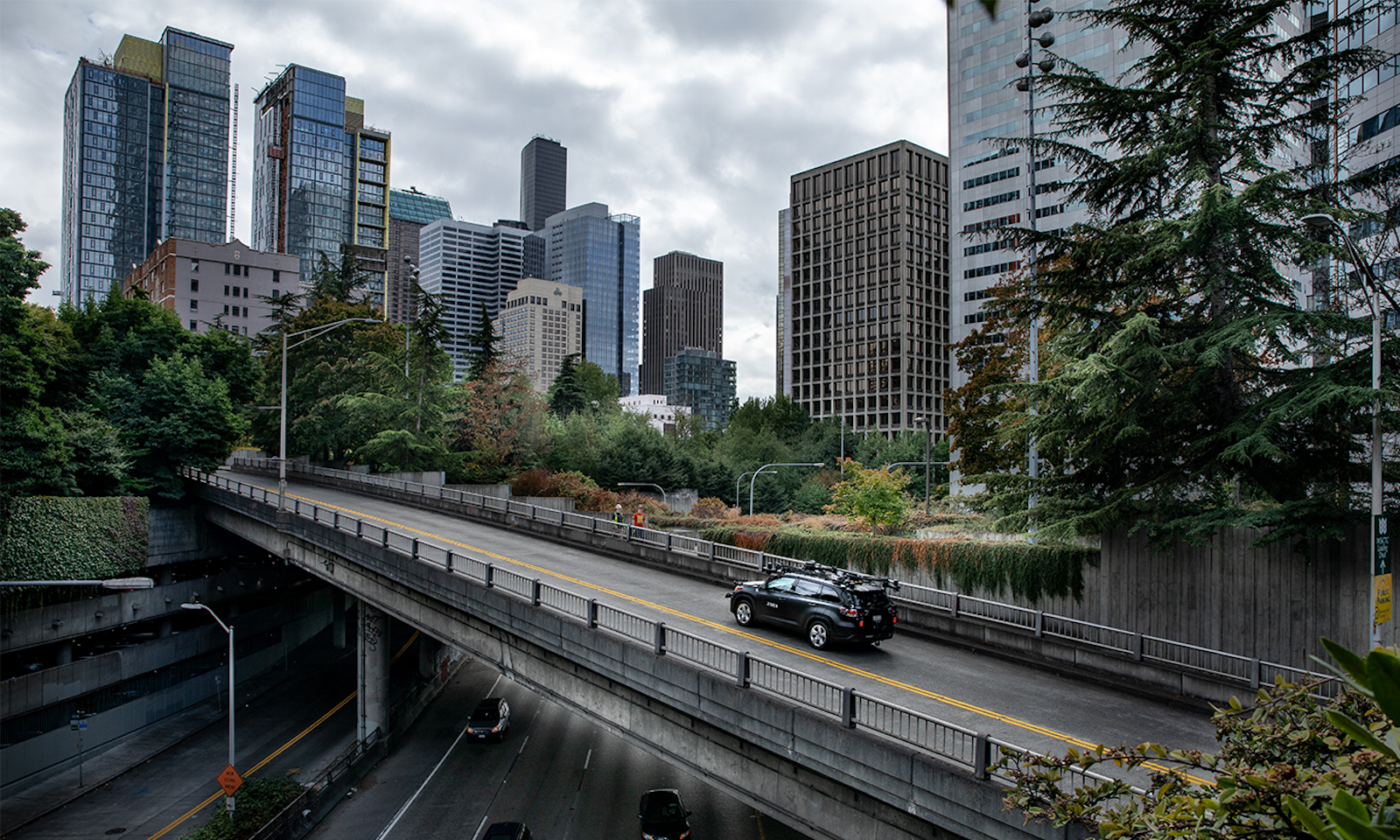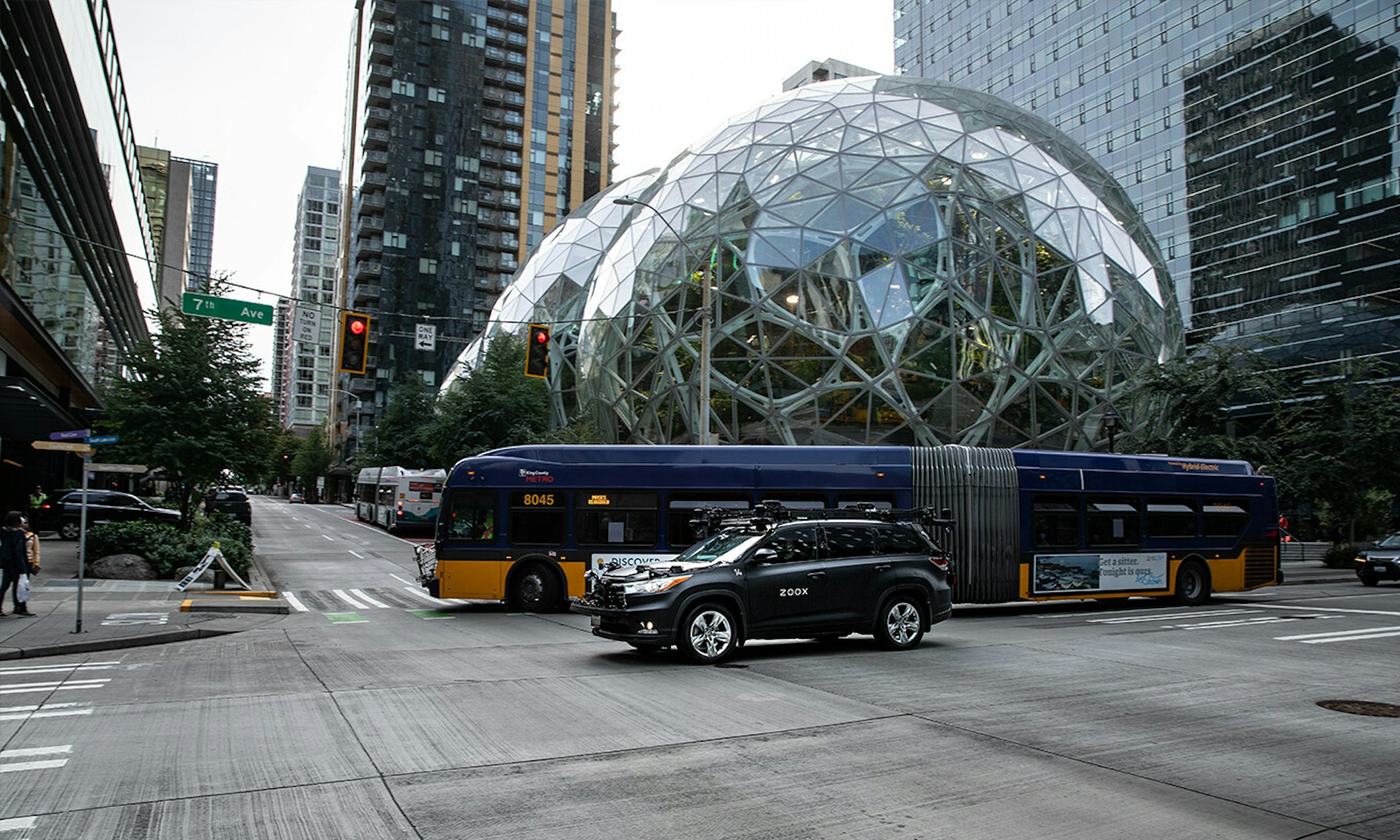Narrow tunnels, one-way systems, inclement weather. Let’s go.
The Seattle area offers a host of new challenges, with new ways to test our vehicles in all kinds of conditions.

The Emerald City
We’ve been testing our L3 vehicles in Las Vegas and the Bay Area for over four years. That means we know a lot about how our hardware and software behave there. But our goal isn’t to change mobility in a few states; we want to reimagine transportation for the whole world. To do that, we have to prepare for unfamiliar roads and novel conditions. Enter Seattle.
Testing in a new city gives our vehicle and AI the chance to experience fresh challenges, including different weather and infrastructure, different by-laws, and a different driving culture. These challenges will help us iterate our hardware and software, ultimately broadening the capabilities of Zoox.
It rains more frequently in Seattle than it does in San Francisco. Human drivers rely on windshield wipers and defrosters to drive safely in adverse weather conditions; we’ve built special hardware into our sensor architecture to remove water and debris. Frequent rain provides more opportunities to collect data and validate these innovations.

ShareJesse Levinson, CTO and Co-Founder“We’re excited to be testing in Seattle. The data we’re gathering will be invaluable for the continued development and generalization of our AI stack.”
We’re also planning to open an office in the Seattle area in 2022. This will mark our fourth base and testing site, following on from San Francisco, Las Vegas, and our headquarters in Foster City.
To start with, we’ll be deploying a small number of our L3 vehicles to get the lay of the land. They’ll kick off our exploration of the area, assessing the complexity and demands of Seattle so that we can keep moving forward.
Our L3 fleet
If you’re in Seattle over the next few months, you might see one of our L3 vehicles on the road. These all-wheel drive Toyota Highlanders are outfitted with the latest software stack and will have a safety driver to take control if needed. We’re the only major AV company with the same sensor architecture in our L3 and L5 fleets, which means the data we gather in Seattle will be directly applicable to our whole fleet, including our purpose-built vehicle. So we can learn more from every mile on the road.

Our vehicle sensors work together to build a picture of our vehicle’s surroundings. Testing these sensors in varied conditions will highlight specific areas to help our systems evolve.
ShareKai Wang, Director of Prediction“A smooth sea never made a skilled sailor, and it’s the exact same principle for our technology. The challenges of Seattle will let us hone our software stack and ultimately improve the behavior of our vehicles.”
The early data we’ll collect in Seattle is also crucial for our Calibration, Localization, and Mapping, Simultaneously (CLAMS) and Zoox Road Network (ZRN) teams, who will start creating a 3D map of the city and populating it with road features: bike lanes, speed limits, traffic lights, and so on. That means when our L5 vehicles are eventually deployed in the city, they’ll have a full working knowledge of their environment from day one.
The road ahead
Arriving in Seattle marks an exciting new step for us. While Las Vegas and San Francisco are still our focus for launch, testing in another city will accelerate our pace of learning and iteration everywhere. We’ll only launch Zoox when we’re certain that our vehicle is meaningfully safer than human driving. Being in the Seattle area will help us reach that milestone sooner.
So here’s to a new city, a new state, and a new chapter in the Zoox story. We couldn’t be more excited about what comes next.
Emerald City, here we come.
Last updated on Nov 3, 2023